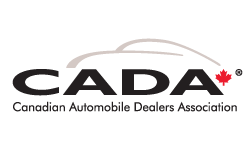In a couple of days, Buddy Boyed and Barbara Hetherington will be embarking on the first-ever “Bolt Across Canada” road trip to educate communities across Canada on how far electric vehicles (EV’s) have come and to prove that EV’s have the capability to go the distance.
Starting in Victoria, B.C. on July 1st, the couple will traverse from coast to coast over the next two months in a 2017 Chevrolet Bolt, ending their trip in Quidi Vidi, Newfoundland, to demonstrate to Canadians across the country that it is possible to have a low impact, zero waste road trip.
Now some of you may be wondering if it’s really possible to go on long road trips in a plug-in vehicle, but with the right tools and a bit of planning, EV drivers can easily maximize the vehicle’s range and get the most of out of one charge.
Just earlier this month, I had the pleasure of going on a road trip to Kamloops and Kelowna in a new Chevrolet Bolt EV to experience my own “Bolt Across B.C.” road trip.
The Bolt, a compact hatchback with up to 380 kilometres of driving range on a full charge, is one of the most affordable EV’s on the market and is a breakthrough alternative to the gas-powered car.
In many ways, my “Bolt Across B.C.” experience was made better by the new phone apps made specifically for EV driving/charging. Equipped with apps like ChargePoint, Greenlots and PlugShare, any EV owner can plan their recharge pit stops right from their phone.
For those who are unfamiliar with these apps, both ChargePoint and Greenlots offer easy payment options for charging your EV on the go. Users can effortlessly find charging spots, check on their availability and with Greenlots, you can even reserve charging stations.
When planning lengthy road trips, PlugShare’s trip planner app is especially helpful. A quick look will tell you the locations of residential chargers, public stations, DC fast charge stations, and also which ones are currently in-use.
Calculating the time to charge is an important part to a successful road trip. The Level 3 or DC fast charge can top up many EVs to 80% within 20-30mins, whereas a Level 2 charger can take 3-4 hours to add 50+km in range.
Fortunately for me, there were a number of faster chargers in Vernon and Westbank and a variety of Level 2 options in Kamloops. The most challenging route was through the Fraser Canyon on the Number One Hwy, and future additions of working fast chargers here will greatly assist EV owners in their travels.
Aside from using these apps to reduce range anxiety, there are several things that EV drivers can do to extend their range in the warmer months.
As with any vehicle in the summer, the hot summer season can take its toll on the battery and affect range. The key to preventing this is to limit activities that may cause stress on your vehicle’s battery.
Small, everyday habits like avoiding high speeds, especially on long, steep hills, parking in the shade and packing lighter can make all the difference when it comes to EV’s. In addition, some EV’s like the Bolt feature special settings like “one pedal driving” designed to limit power output and maximize range.
If you’re interested in purchasing an EV, I encourage you to check out the CEVforBC™ program which offers British up to $5,000 and $6,000 towards the purchase of a new vehicle.
The automotive industry has never been more green or eco-friendly. Visit your local new car dealer today to learn more about what exciting options that technology is creating for consumers and to test-drive the newest models in the market.
Blair Qualey is President and CEO of the New Car Dealers Association of BC. You can email him at [email protected].









